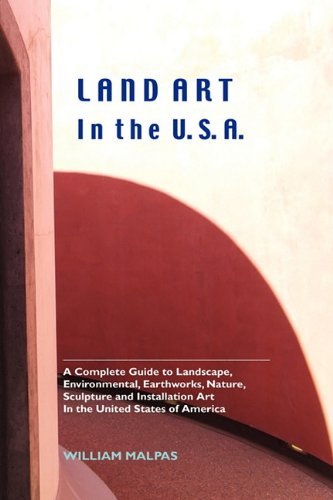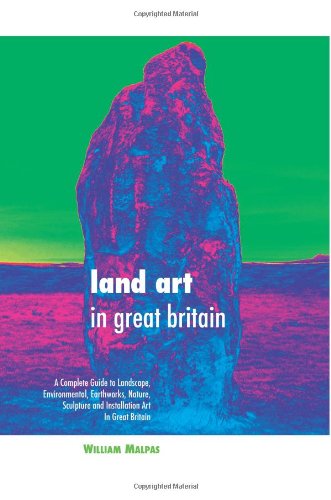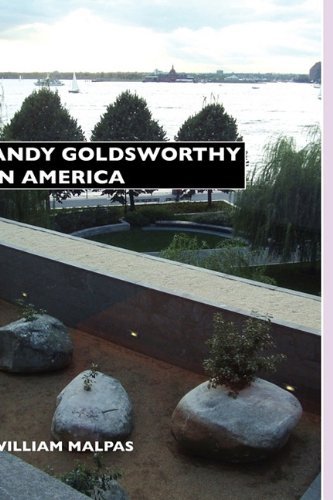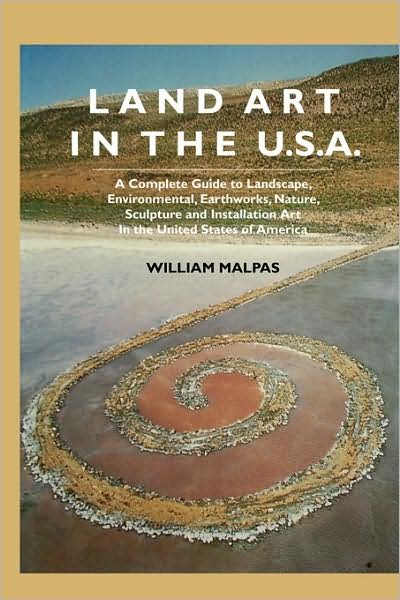
Faites connaître cet article à vos amis:
Land Art in the U.s.a. (Sculptors) 2nd Revised edition
William Malpas
Land Art in the U.s.a. (Sculptors) 2nd Revised edition
William Malpas
LAND ART IN THE U. S. A.
A new study of land art in America, featuring all of the well-known land artists from the 'golden age' of land art - the 1960s - to the present day.
Fully illustrated, with a bibliography.
EXTRACT FROM THE CHAPTER ON ROBERT SMITHSON
Robert Smithson is the key land artist, the premier artist in the world of land art. And he's been a big favourite with art critics since the early Seventies. Smithson was the chief mouthpiece of American earth/ site æsthetics, and is probably the most important artist among all land artists.
For Robert Smithson, Carl Andre, Walter de Maria, Michael Heizer, Dennis Oppenheim and Tony Smith were 'the more compelling artists today, concerned with 'Place' or 'Site''. Smithson was impressed by Tony Smith's vision of the mysterious aspects of a dark unfinished road and called Smith 'the agent of endlessness'. Smith's æsthetic became part of Smithson's view of art as a complete 'site', not simply an æsthetic of sculptural objects. Smithson was not inspired by ancient religious sculpture, by burial mounds, for example, so much as by decayed industrial sites. He visited some in the mid-1960s that were 'in some way disrupted or pulverized'. He said he was looking for a 'denaturalization rather than built up scenic beauty'.
Robert Smithson said he was concerned, like many land (and contemporary artists with the thing in itself, not its image, its effect, its critical significance: 'I am for an art that takes into account the direct effect of the elements as they exist from day to day apart from representation'. Smithson's theory of the 'non-site' was based on 'absence, a very ponderous, weighty absence'. Smithson proposed a theory of a dialectic between absence and presence, in which the 'non-site' and 'site' are both interacting. In the 'non-site' work, presence and absence are there simultaneously. 'The land or ground from the Site is placed in the art (Non-Site) rather than the art is placed on the ground. The Non-Site is a container within another container - the room'.
William Malpas has written books on Richard Long and land art, as well as three books on Andy Goldsworthy, including the forthcoming Andy Goldsworthy In America. Malpas's books on Richard Long and Andy Goldsworthy are the only full-length studies of these artists available.
| Médias | Livres Hardcover Book (Livre avec dos et couverture rigide) |
| Validé | 1 mars 2010 |
| ISBN13 | 9781861712707 |
| Éditeurs | Crescent Moon Publishing |
| Pages | 356 |
| Dimensions | 230 × 20 × 154 mm · 671 g |
| Langue et grammaire | English |
Plus par William Malpas
Voir tous les William Malpas ( par ex. Paperback Book et Hardcover Book )






![Cover for William Malpas · Land Art: A Complete Guide To Landscape, Environmental, Earthworks, Nature, Sculpture and Installation Art - Sculptors (Paperback Book) [3rd Reprint edition] (2018)](https://imusic.b-cdn.net/images/item/original/528/9781861717528.jpg?william-malpas-2018-land-art-a-complete-guide-to-landscape-environmental-earthworks-nature-sculpture-and-installation-art-sculptors-paperback-book&class=scaled&v=1625811195)
![Cover for William Malpas · The Art of Andy Goldsworthy - Sculptors (Paperback Book) [5th Revised edition] (2018)](https://imusic.b-cdn.net/images/item/original/399/9781861717399.jpg?william-malpas-2018-the-art-of-andy-goldsworthy-sculptors-paperback-book&class=scaled&v=1638826367)














![Cover for William Malpas · The Art of Richard Long (Sculptors) (Hardcover Book) [5th edition] (2012)](https://imusic.b-cdn.net/images/item/original/490/9781861713490.jpg?william-malpas-2012-the-art-of-richard-long-sculptors-hardcover-book&class=scaled&v=1410007559)



![Cover for William Malpas · Andy Goldsworthy in Close-up - Sculptors (Paperback Book) [4 Revised edition] (2010)](https://imusic.b-cdn.net/images/item/original/936/9781861712936.jpg?william-malpas-2010-andy-goldsworthy-in-close-up-sculptors-paperback-book&class=scaled&v=1483459676)
![Cover for William Malpas · Andy Goldsworthy in America - Sculptors (Paperback Book) [2 Revised edition] (2010)](https://imusic.b-cdn.net/images/item/original/049/9781861713049.jpg?william-malpas-2010-andy-goldsworthy-in-america-sculptors-paperback-book&class=scaled&v=1483459675)


![Cover for William Malpas · Andy Goldsworthy: Pocket Guide (Sculptors) (Paperback Book) [Poc edition] (2008)](https://imusic.b-cdn.net/images/item/original/417/9781861712417.jpg?william-malpas-2008-andy-goldsworthy-pocket-guide-sculptors-paperback-book&class=scaled&v=1409640666)
![Cover for William Malpas · Land Art in the U.k.: a Complete Guide to Landscape, Environmental, Earthworks, Nature, Sculpture and Installation Art in the United Kingdom (Sculptors) (Hardcover Book) [2nd Revised edition] (2008)](https://imusic.b-cdn.net/images/item/original/956/9781861710956.jpg?william-malpas-2008-land-art-in-the-u-k-a-complete-guide-to-landscape-environmental-earthworks-nature-sculpture-and-installation-art-in-the-united-kingdom-sculptors-hardcover-book&class=scaled&v=1450370375)
![Cover for William Malpas · Land Art: a Complete Guide to Landscape, Environmental, Earthworks, Nature, Sculpture and Installation Art (Contemporary Art) (Hardcover Book) [3rd Revised edition] (2008)](https://imusic.b-cdn.net/images/item/original/325/9781861712325.jpg?william-malpas-2008-land-art-a-complete-guide-to-landscape-environmental-earthworks-nature-sculpture-and-installation-art-contemporary-art-hardcover-book&class=scaled&v=1409843203)
![Cover for William Malpas · Land Art in Close-up (Sculptors) (Paperback Book) [2nd Revised edition] (2008)](https://imusic.b-cdn.net/images/item/original/363/9781861712363.jpg?william-malpas-2008-land-art-in-close-up-sculptors-paperback-book&class=scaled&v=1409909947)